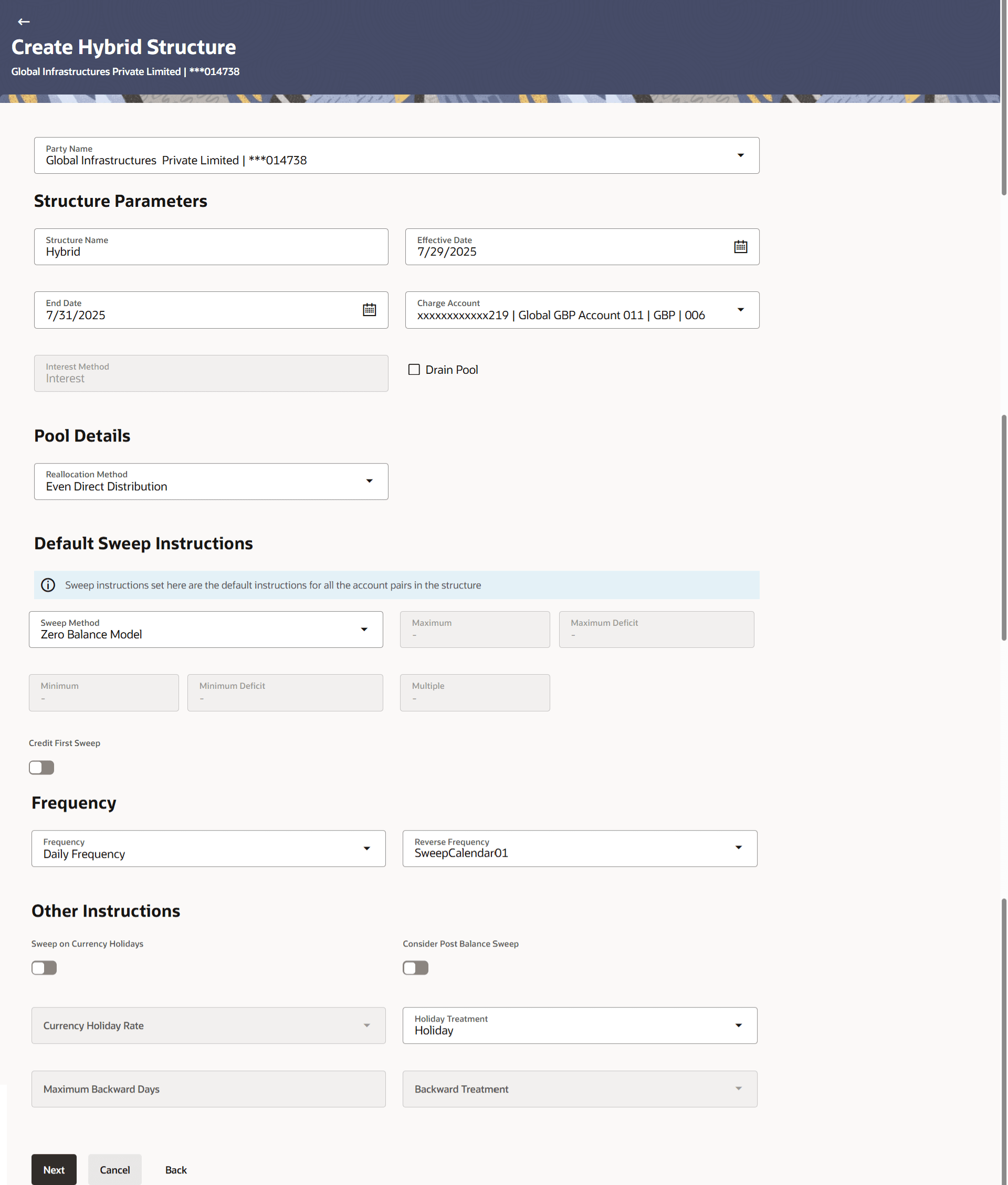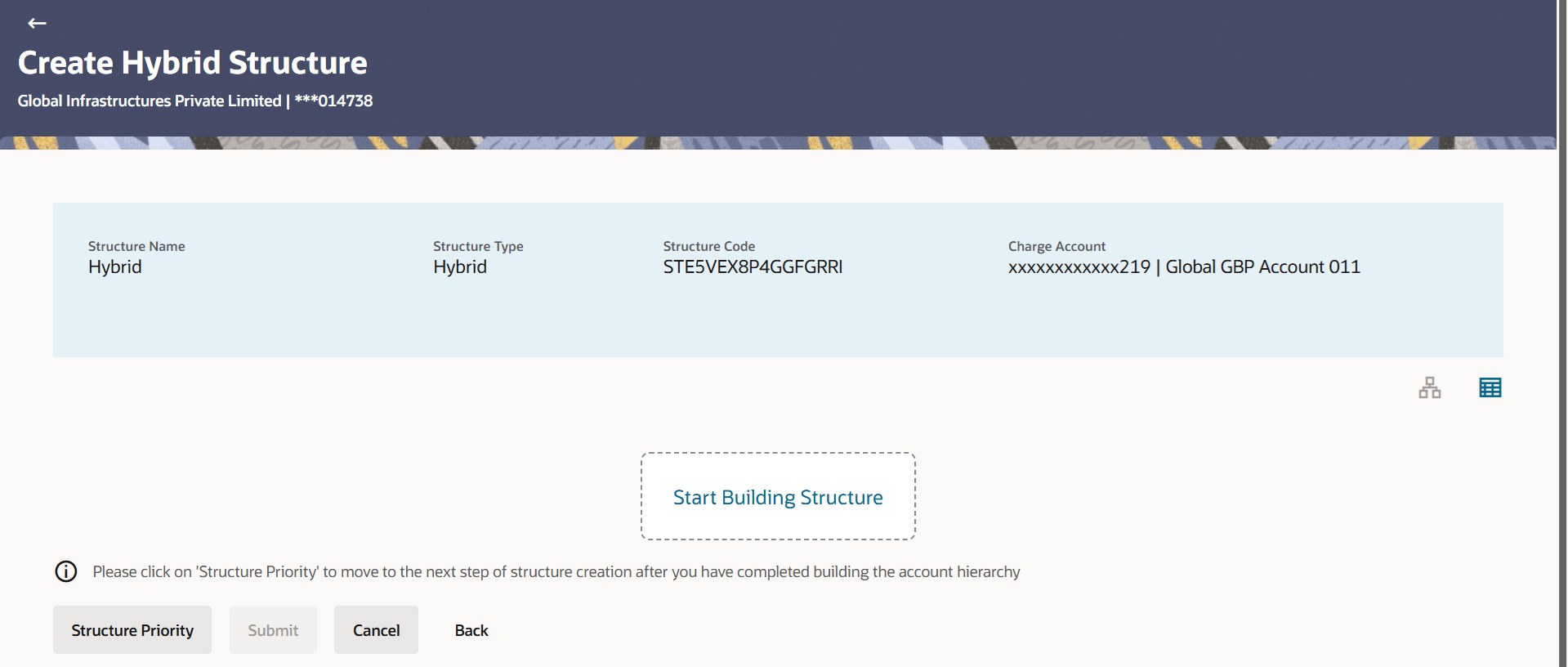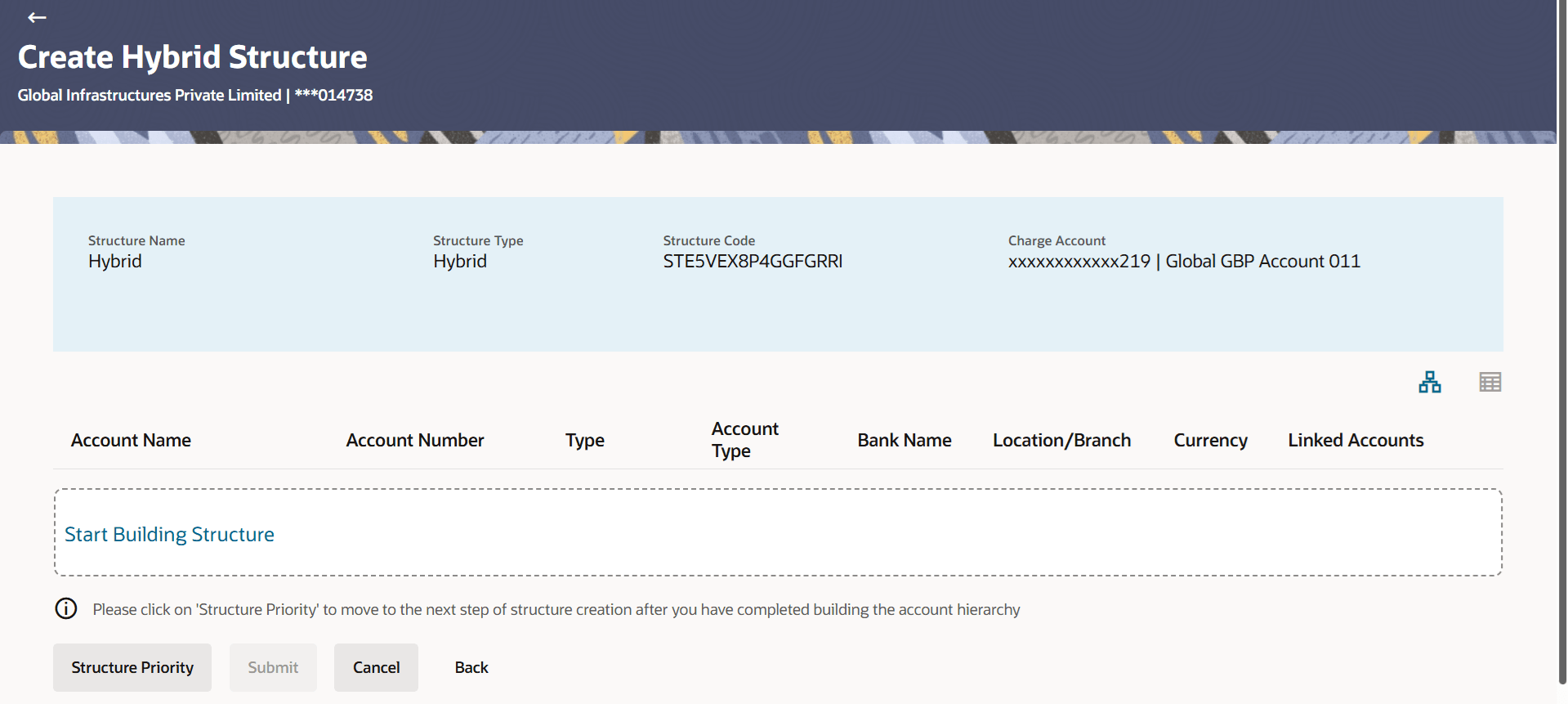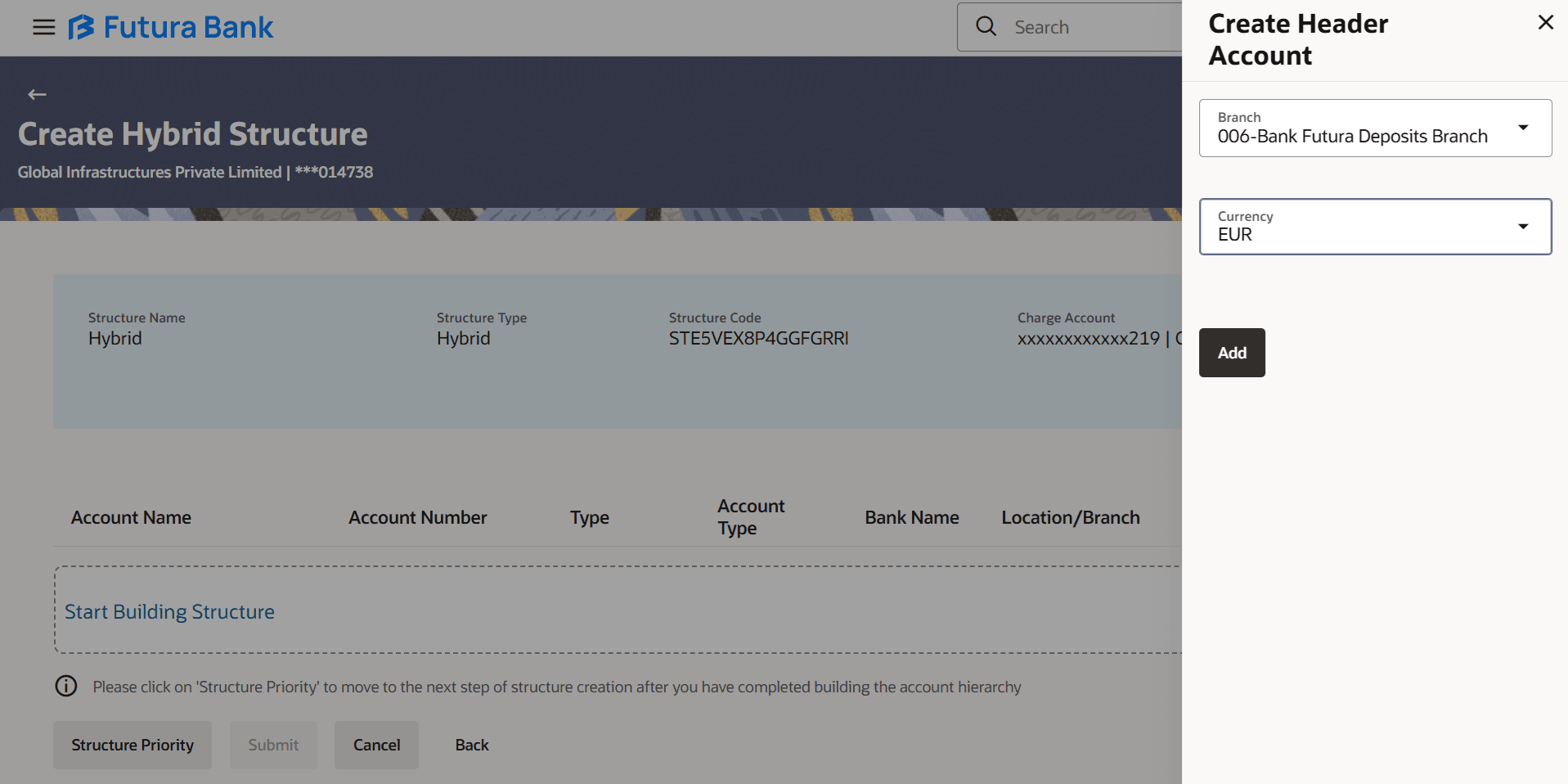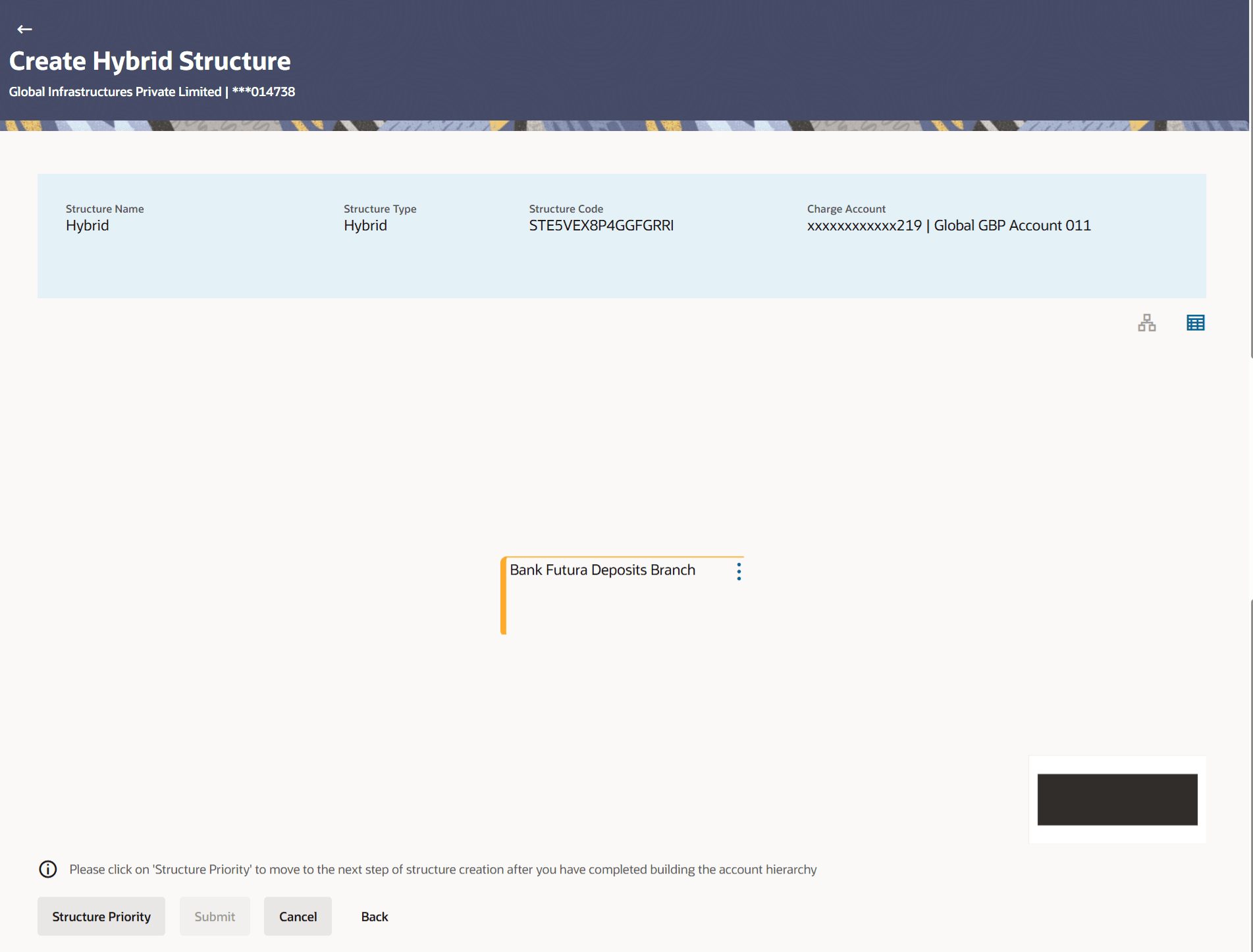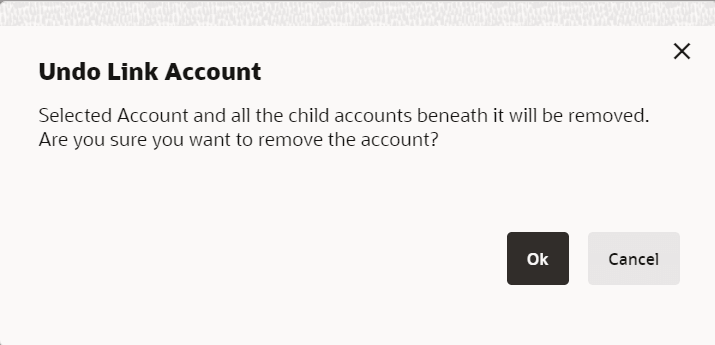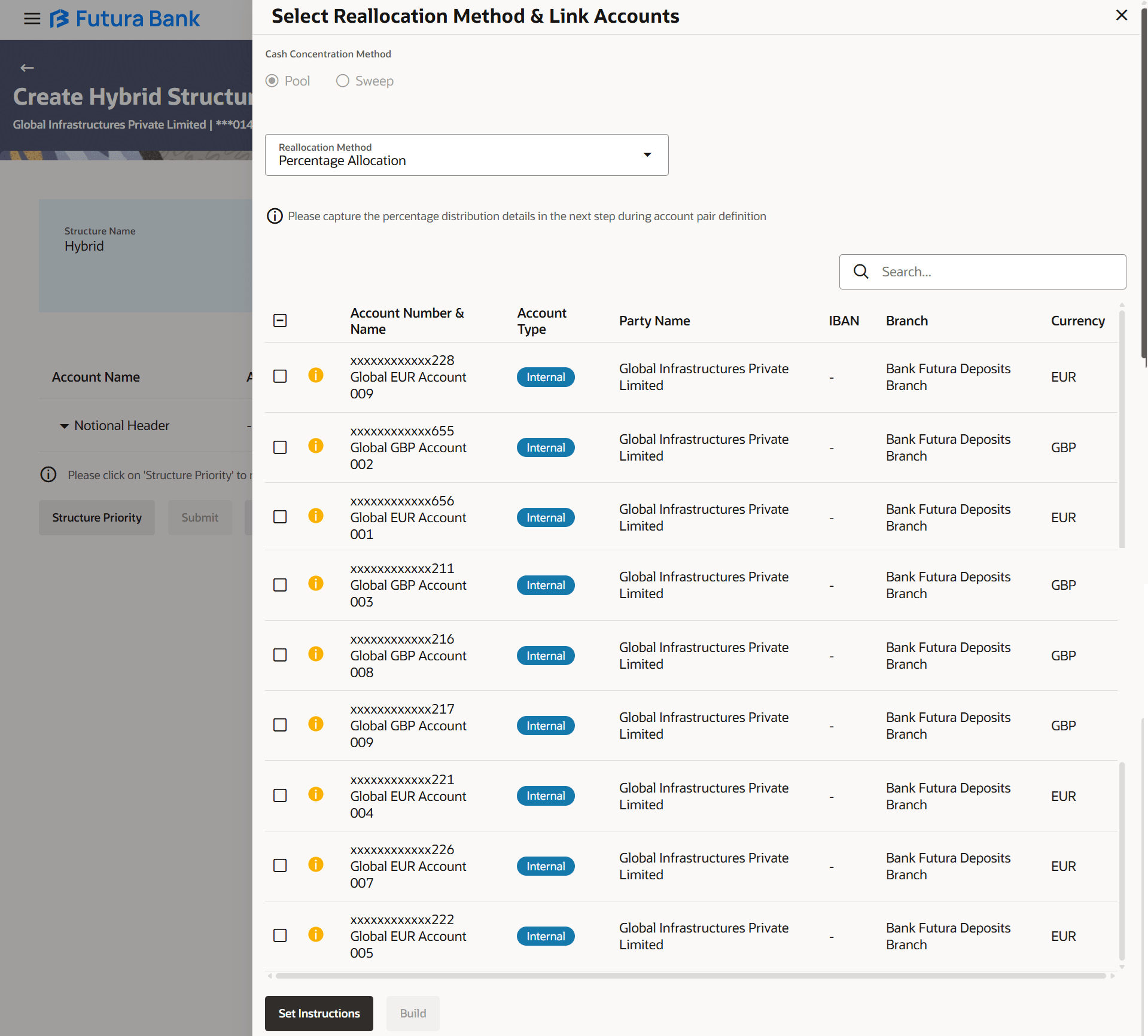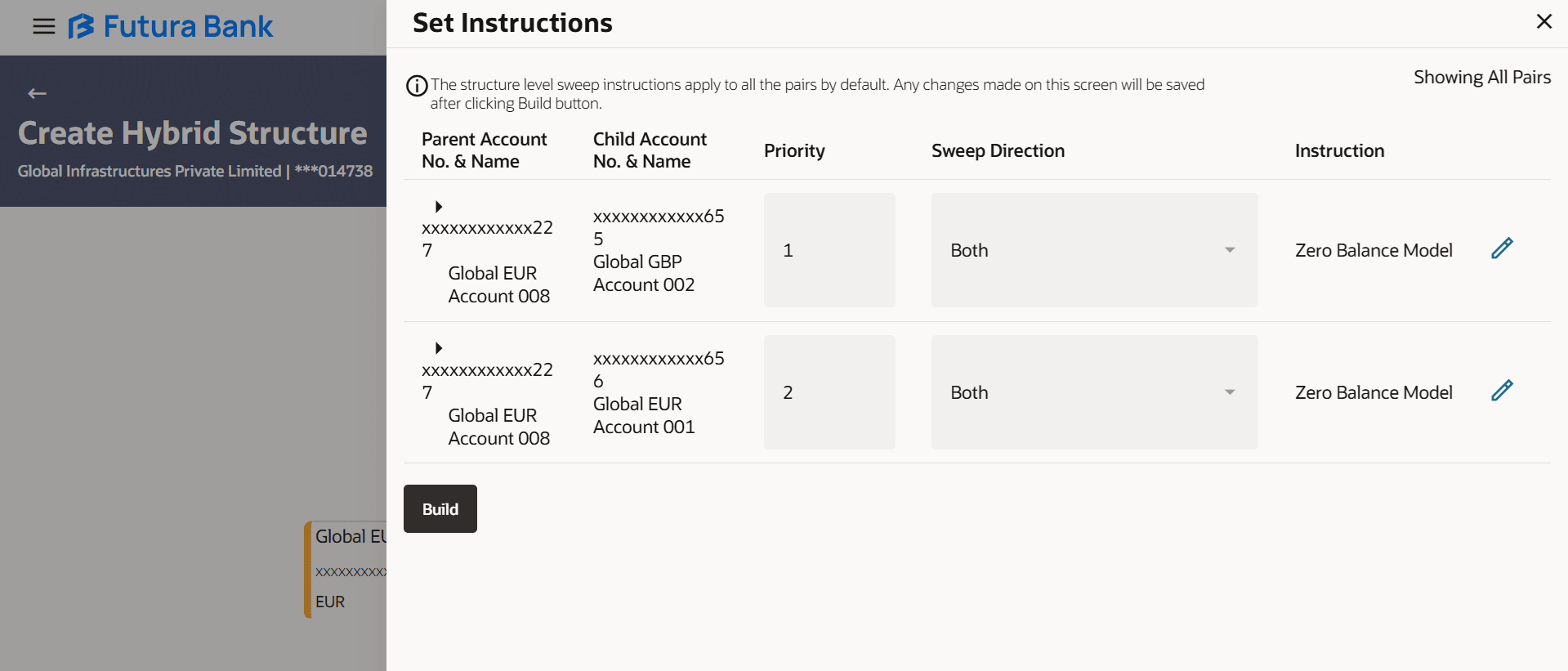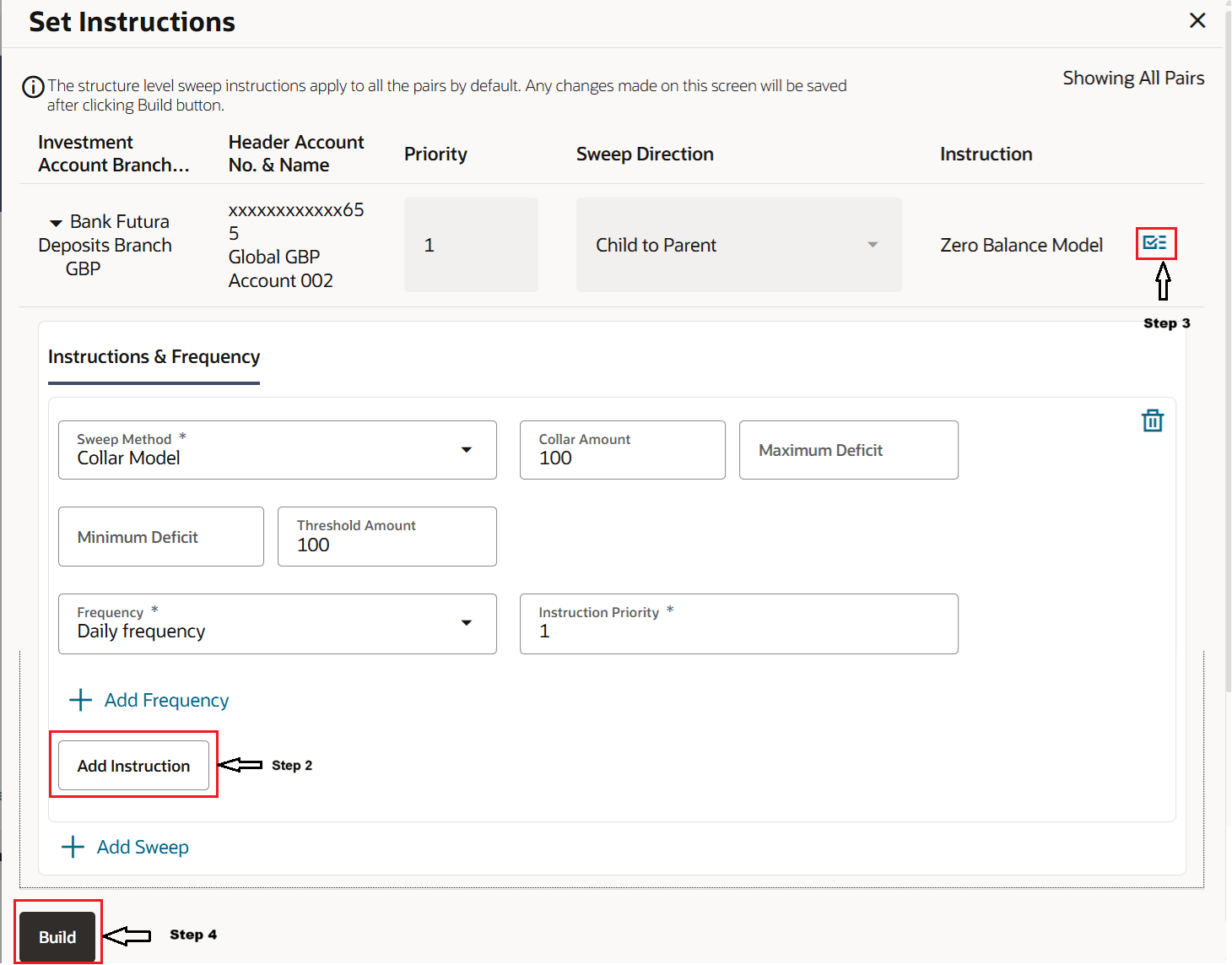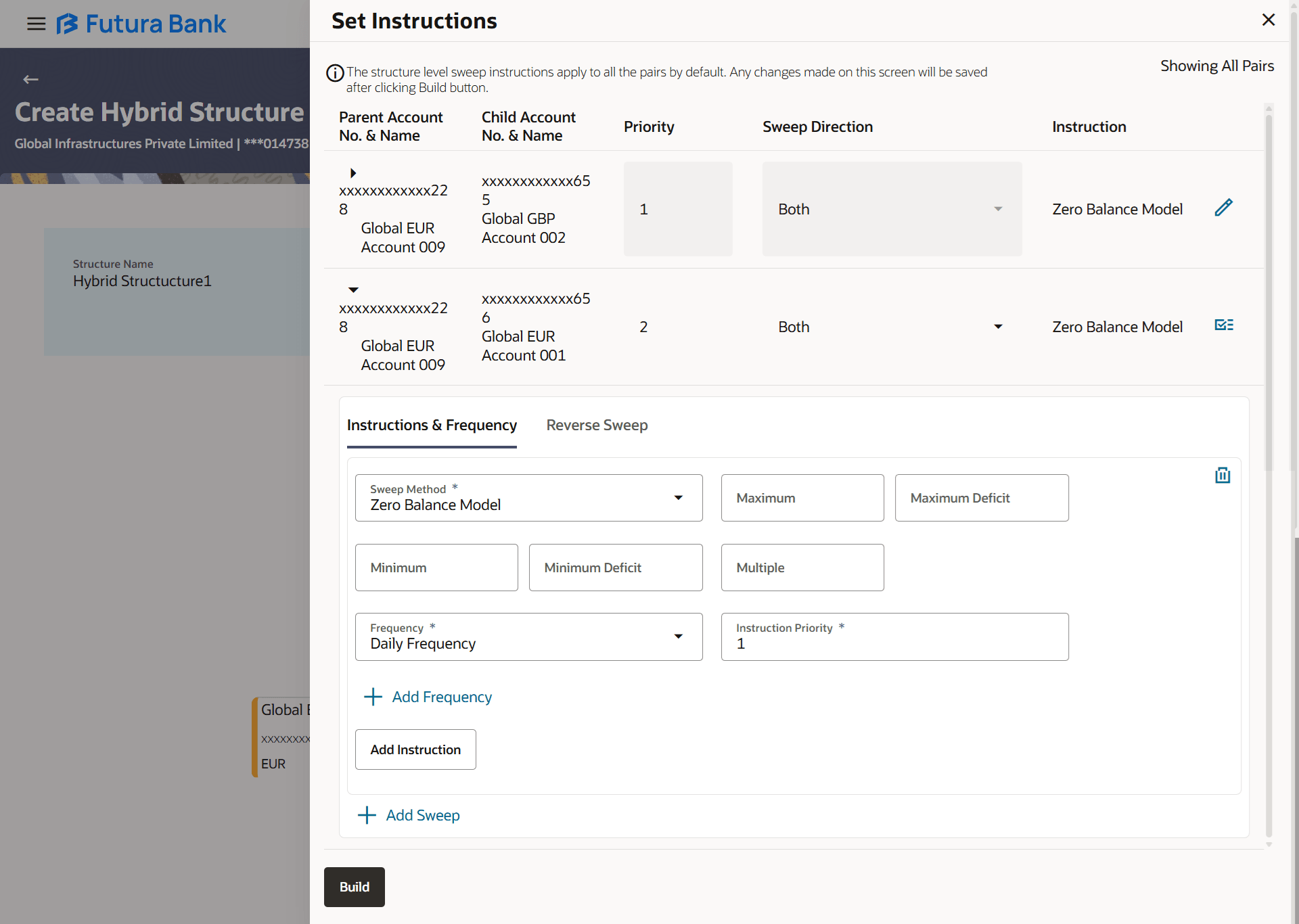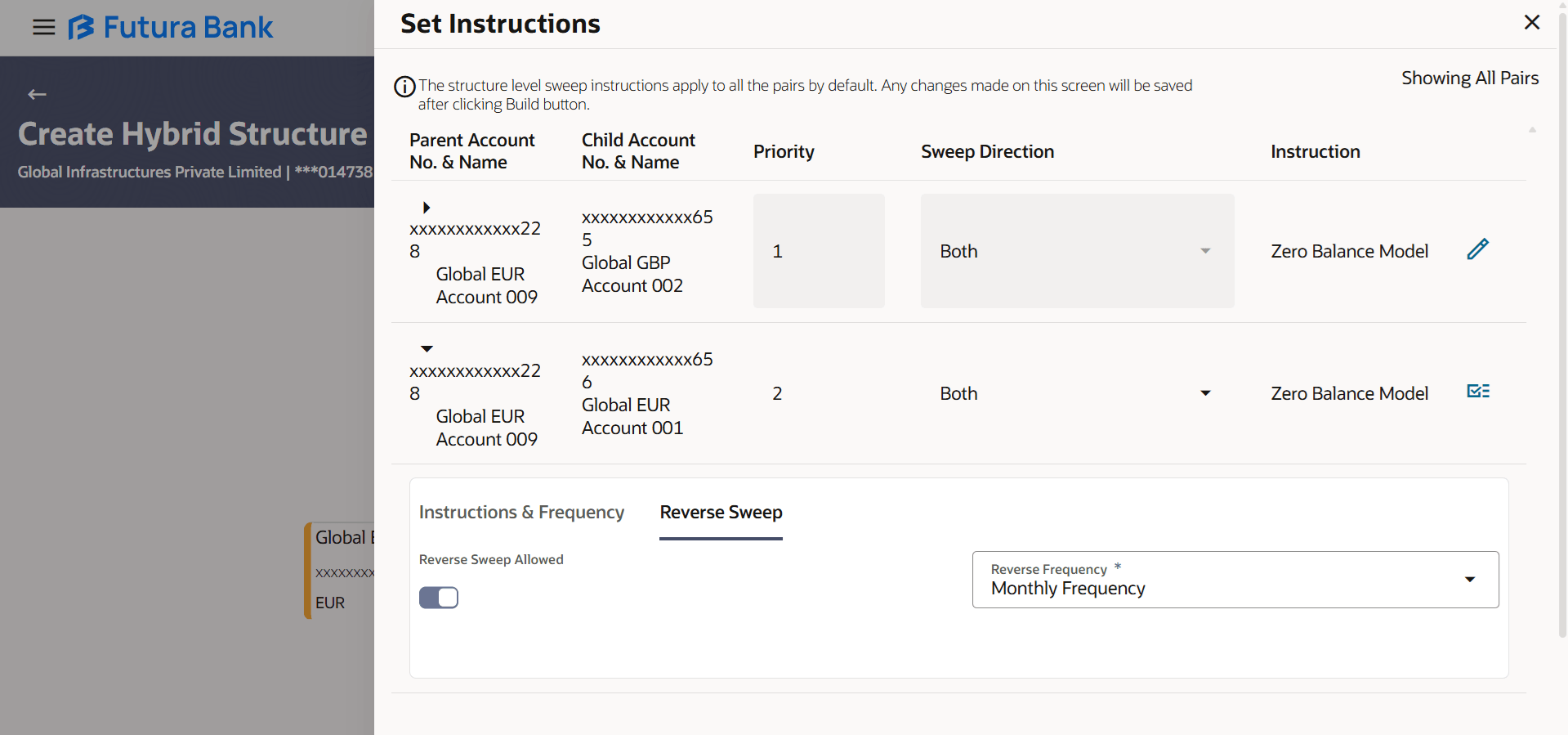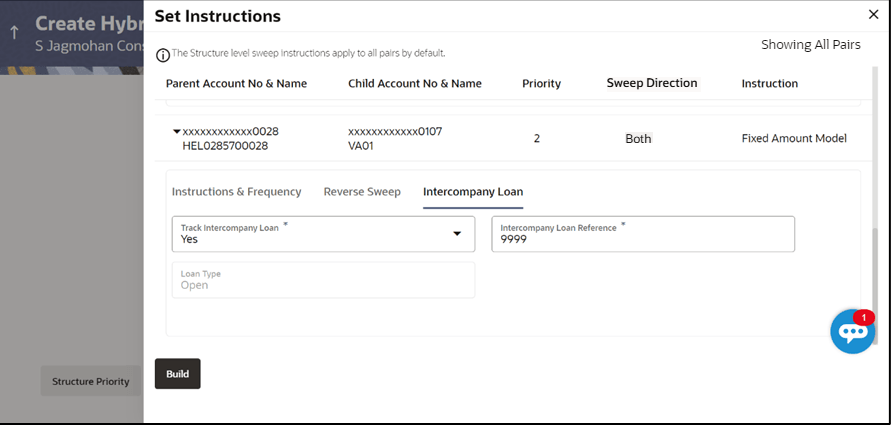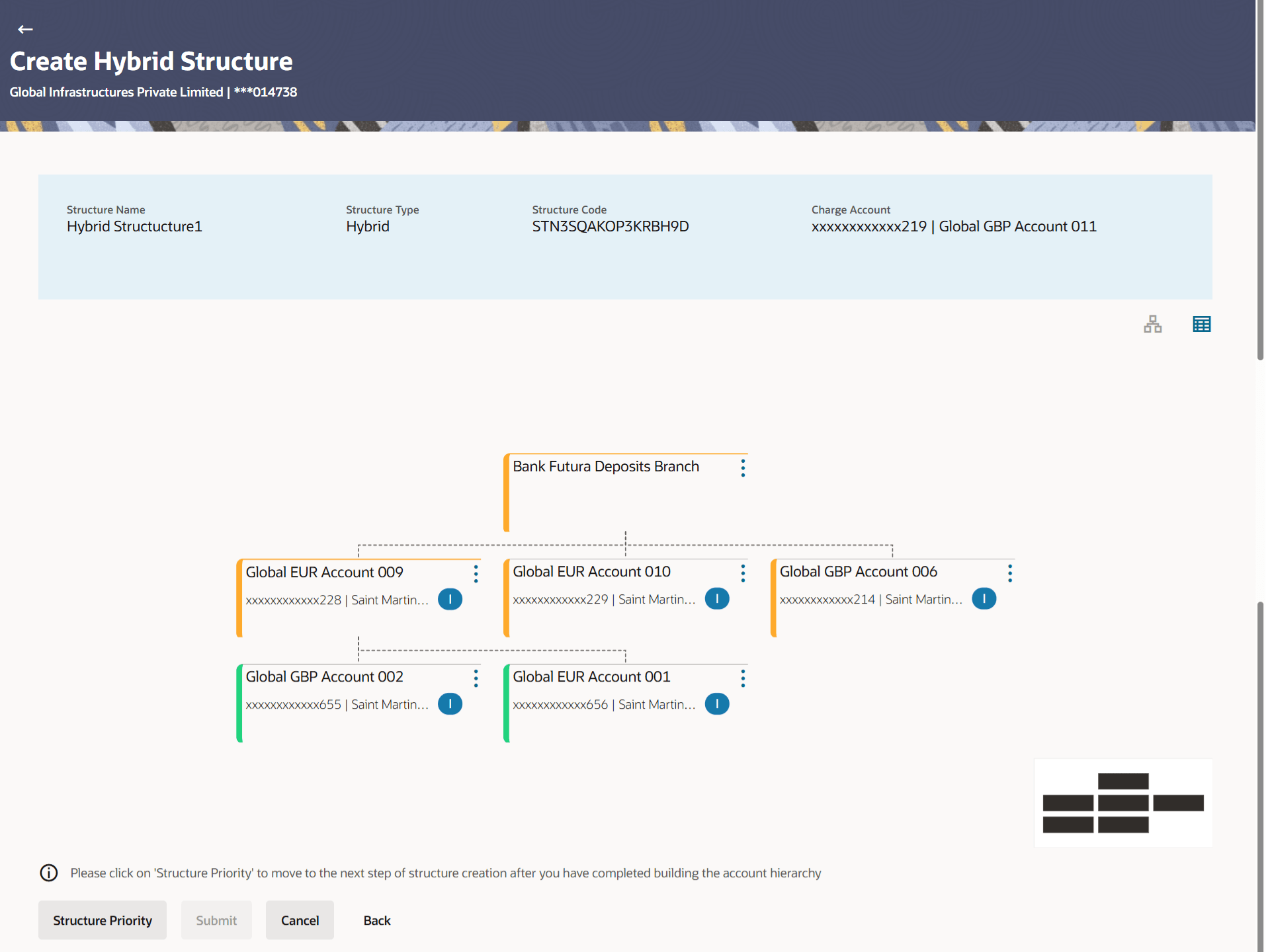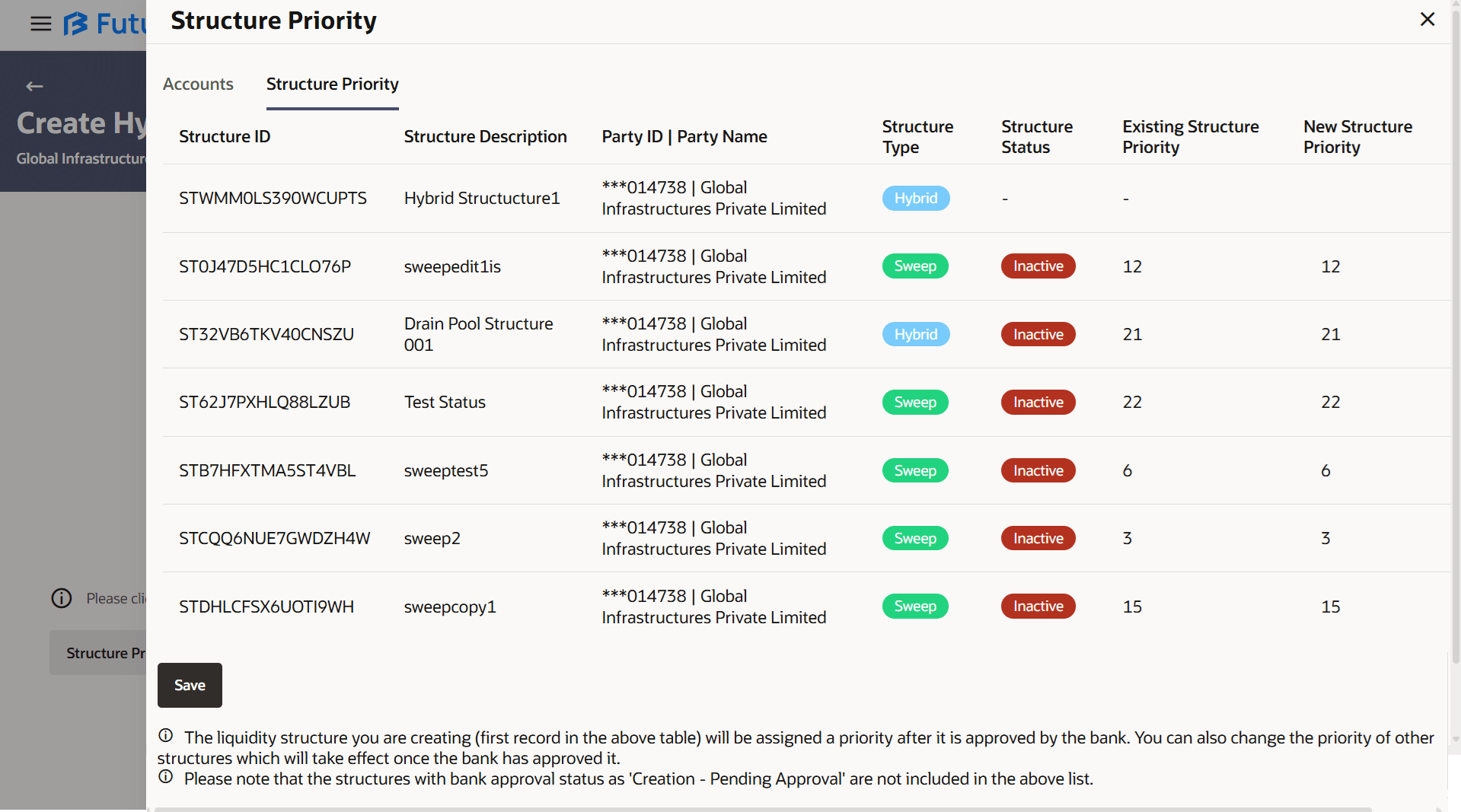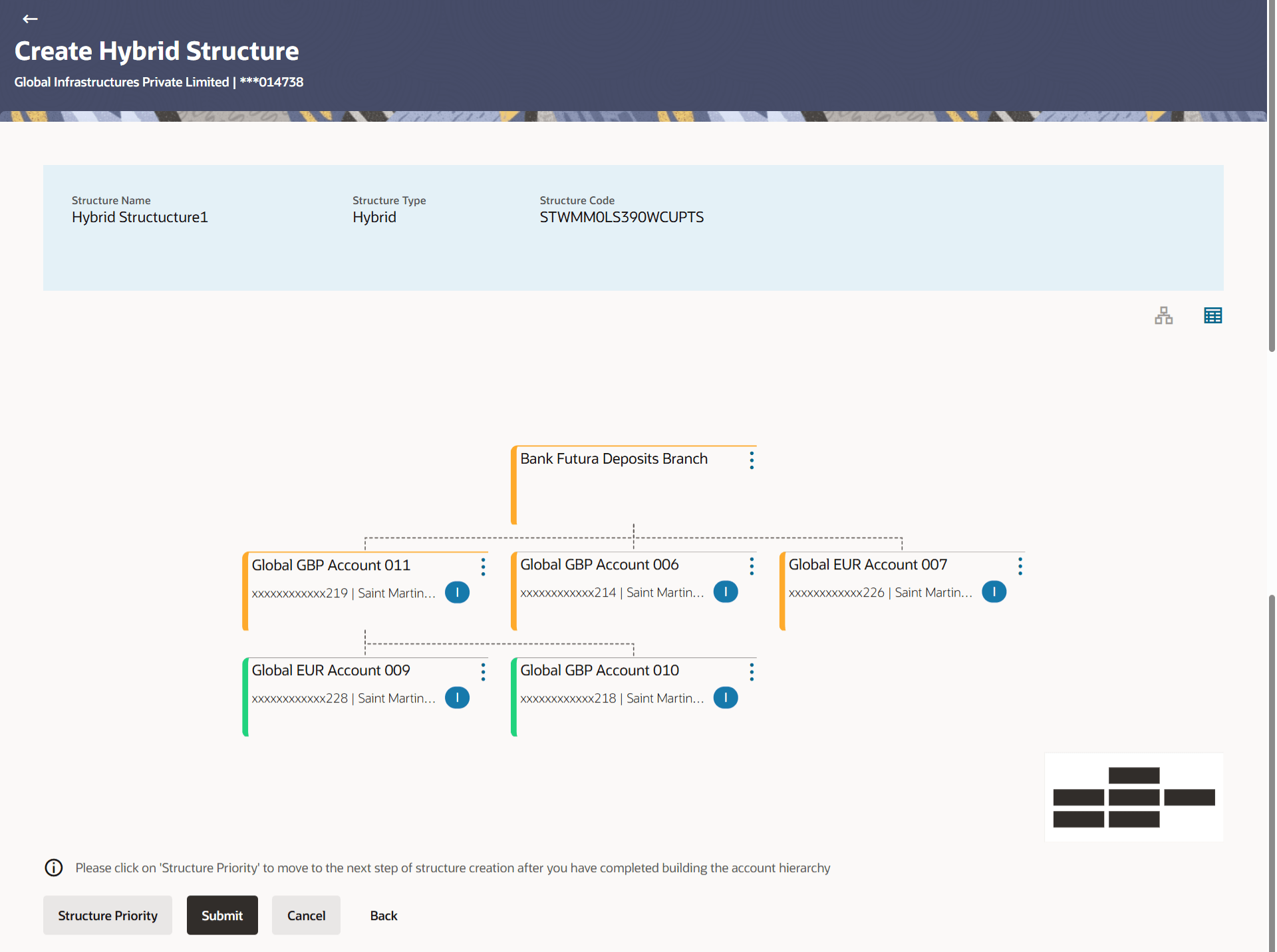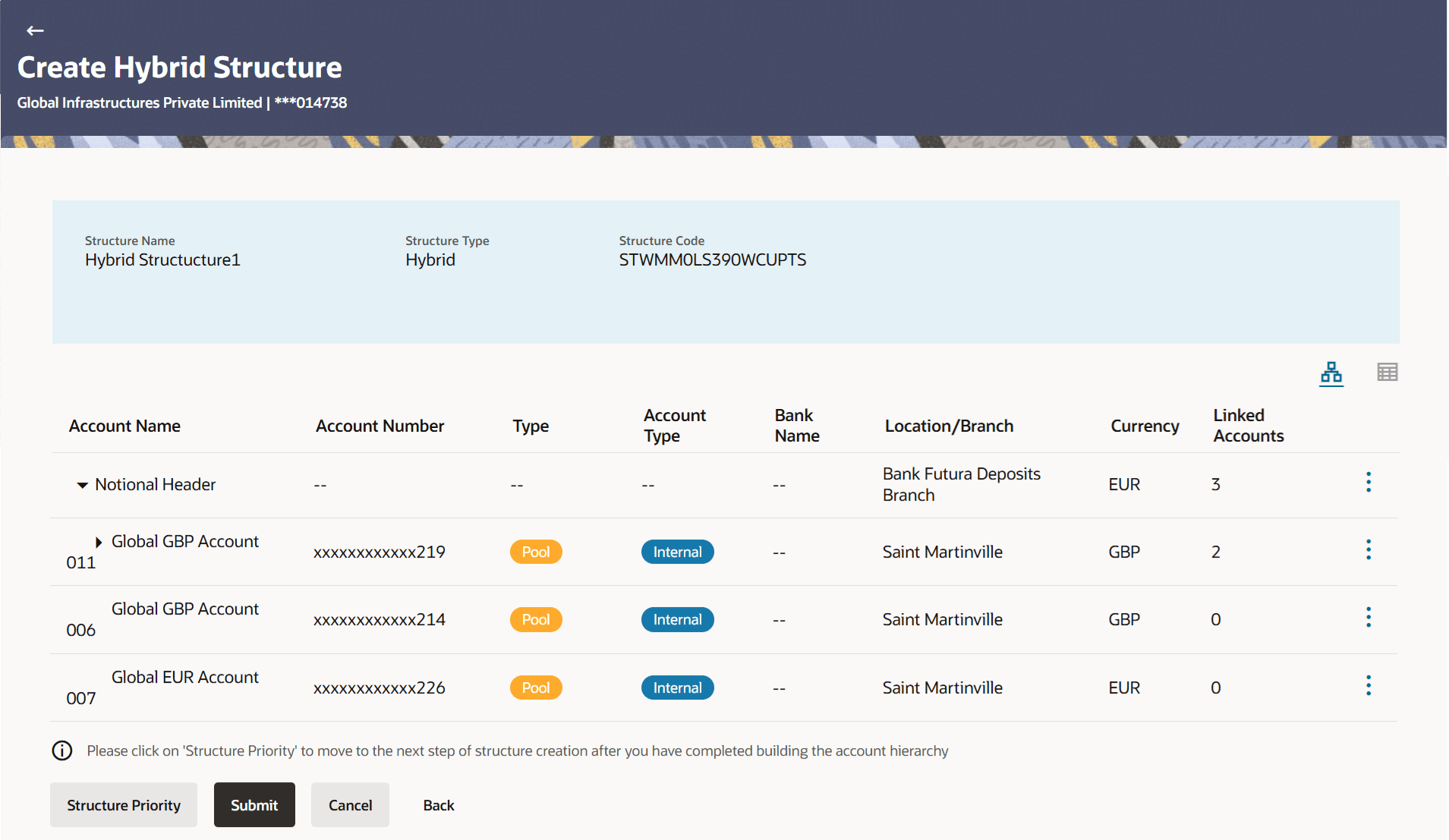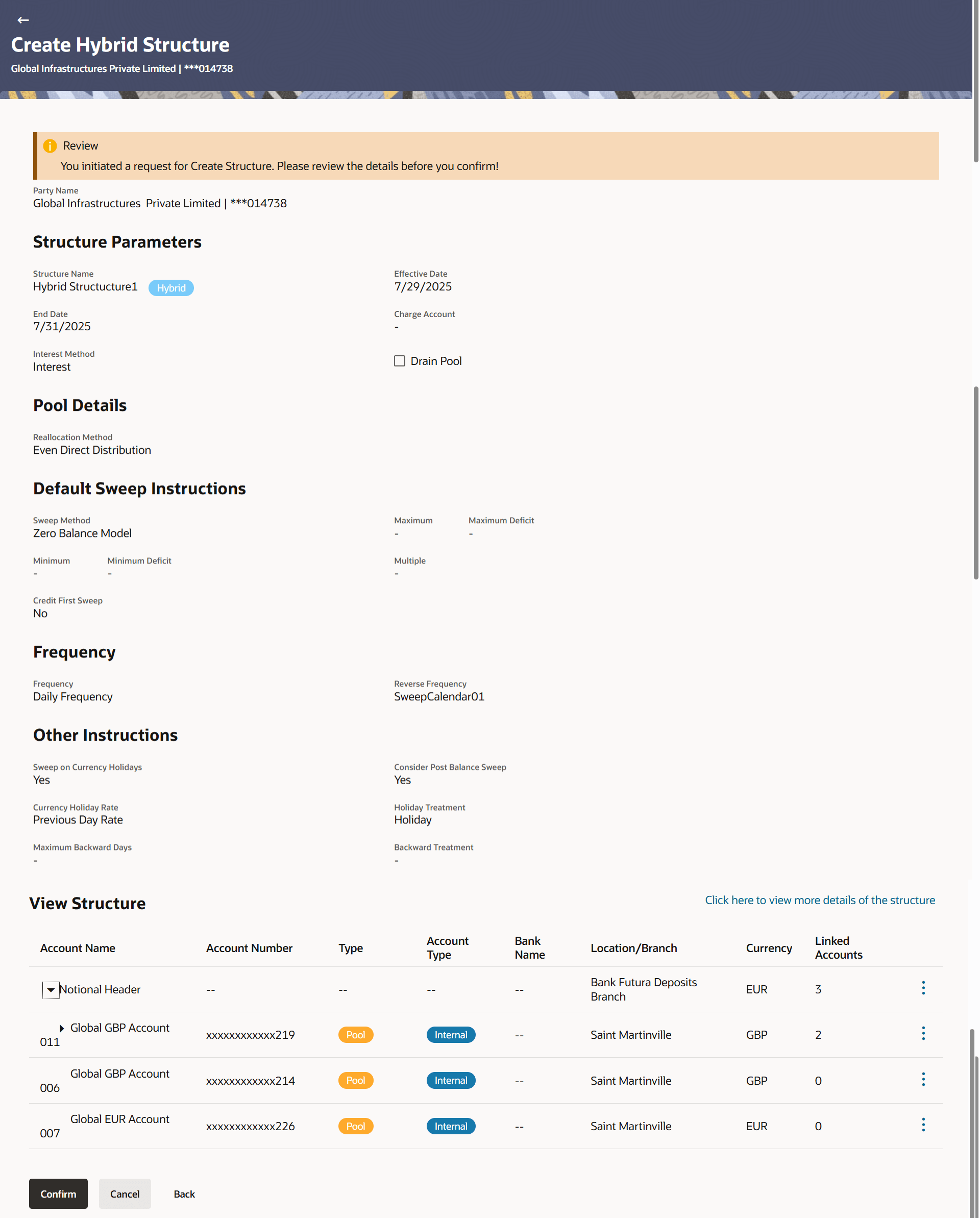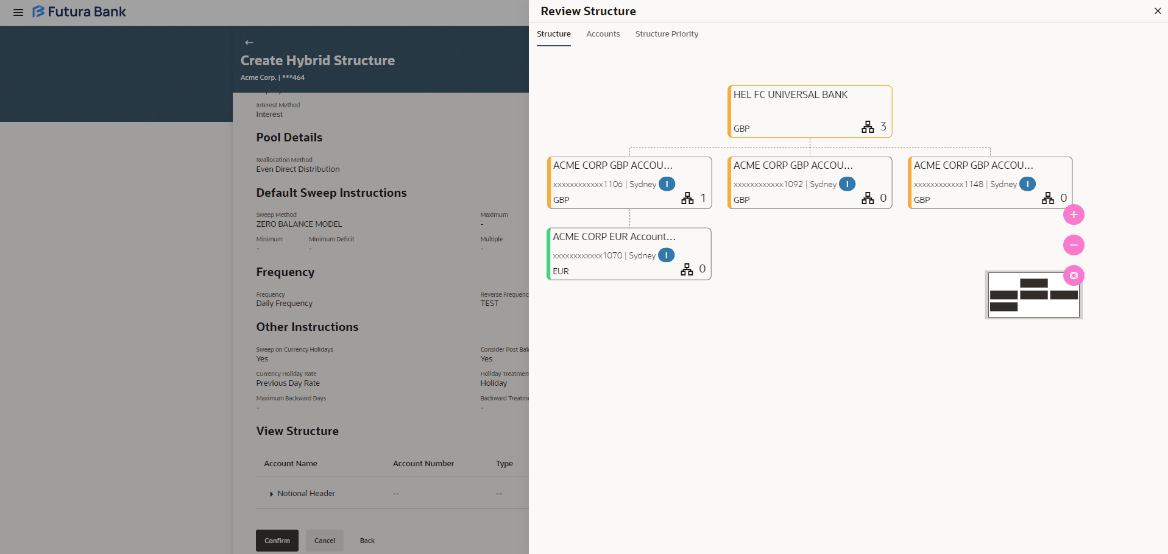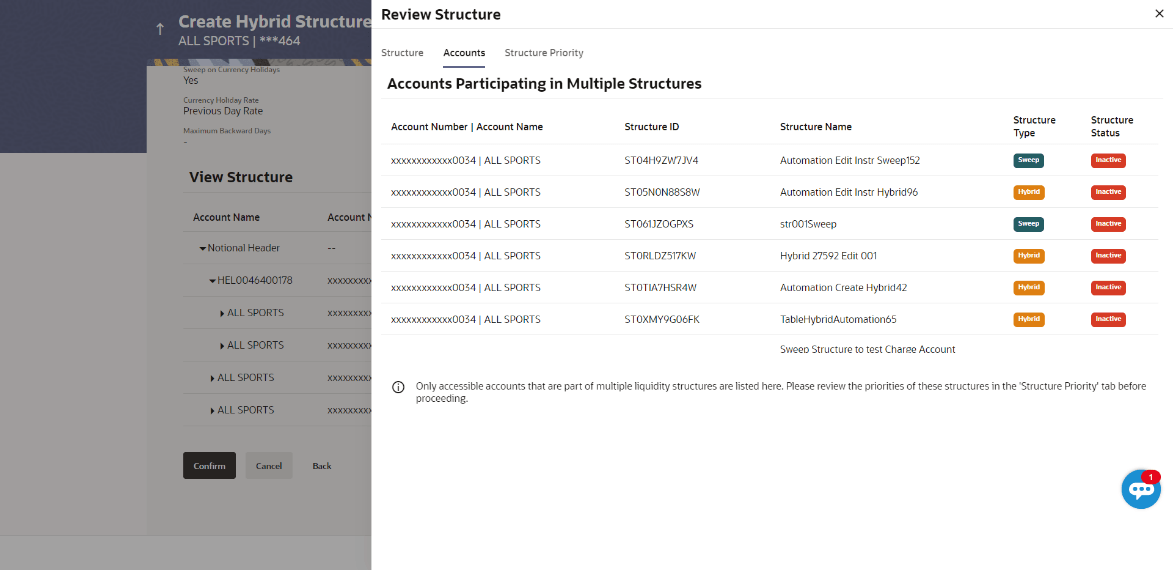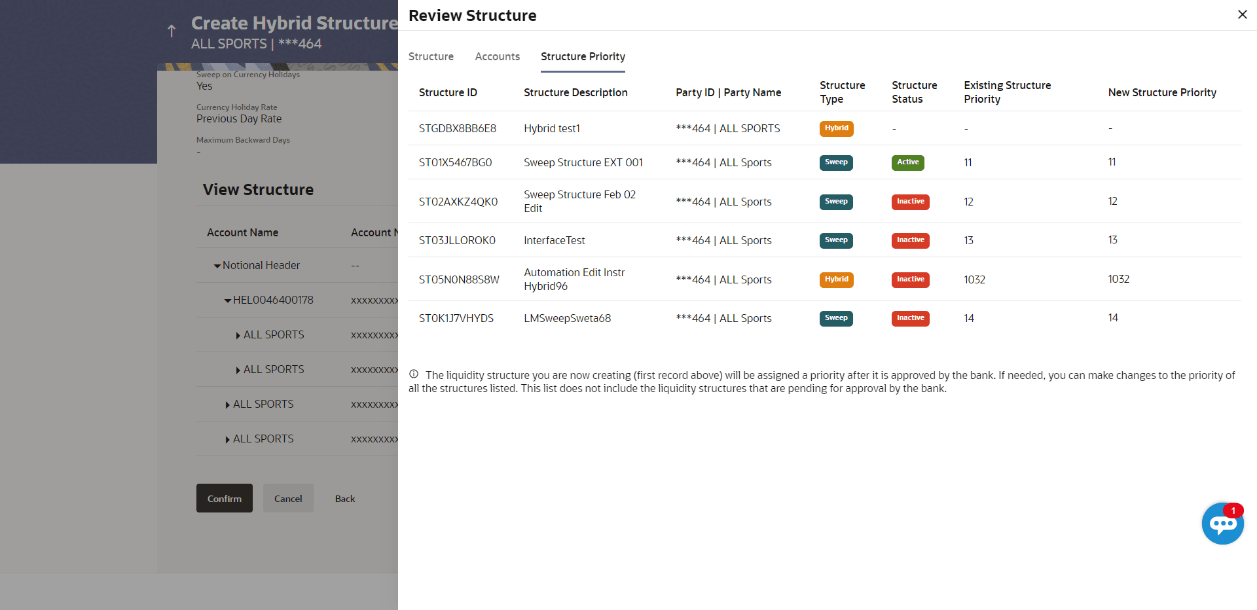3.2.3 Create Hybrid Structure
This topic describes the systematic instruction to Create Hybrid Structure screen, that enables the user to build the hybrid structure to move funds and then notionally consolidate them.
The first step of hybrid structure creation involves defining the basic details of the hybrid structure like structure name, effective date, end date, etc.
As a part of following step, the user can build the structure by adding the header and child accounts.
By default, the Build Structure screen displays in tree view.
Figure 3-55 Create Hybrid Structure – Build Structure – Tree View
As a part of following step, the user can create header account in which the funds will concentrated.
Figure 3-57 Create Hybrid Structure – Create Header Account Table 3-38 Create Hybrid Structure - Create Header Account - Field Description
For more information on fields, refer to the field description table.
Field
Description
Branch
Select the branch name for the header account.
Currency
Select the currency for the header account.
The user can search and select the accounts to be linked to the selected header/parent account. The filtered account list for which the user has access to will appear for linking the accounts. For GCIF enabled environment, the account list also shows the linked party account of the transaction party.
Note:
Once the child accounts are selected, the user can further set the allocation percentage for each child accounts. This screen is applicable only if the Reallocation Method is selected as Percentage Allocation.
Note: Figure 3-61 Create Hybrid Structure – Reallocation Table 3-42 Create Hybrid Structure - Reallocation – Field Description By default, the value displays as Percentage Allocation.
Note: Sweep Priority can be modified only if Showing All Pairs.
For more information on fields, refer to the field description table.
Field
Description
Reallocation Method
Displays the method in which the interest is shared with the participating accounts within the account structure.
Account Number & Name
Displays the account numbers and name of the account in masked format.
Priority
Specify the sweep priority used to determine the order of execution across pairs at a level in the structure.
Allocation Percentage
Specify the allocation percentage for the child account.
Once the child accounts are linked, the user can further set the instruction between an account pair along with the parent and child account information.
Note: Figure 3-62 Create Hybrid Structure – Set Instructions Table 3-43 Create Hybrid Structure - Set Instructions – Field Description Note: Sweep Priority can be modified only if Showing All Pairs.
The options
are:
For more information on fields, refer to the field description table.
Field
Description
Parent Account No & Name
Displays the parent account number & name of the structure in masked format.
Child Account No & Name
Displays the child account number & name of the structure in masked format.
Priority
Specify the sweep priority used to determine the order of execution across pairs at a level in the structure.
Sweep Direction
Displays the sweep direction for the account pair.
Instruction
Displays the instruction type for the account pair.
The user can create the instructions and frequency for the account pair.The Create Hybrid Structure - Set Instructions – Instructions & Frequency screen displays.
Figure 3-63 Create Hybrid Structure – Set Instructions – Instructions & Frequency
The user can create the reverse frequency for the account pair.The Create Hybrid Structure - Set Instructions – Reverse Sweep screen displays.
Figure 3-66 Create Hybrid Structure – Set Instructions – Reverse Sweep Table 3-45 Create Hybrid Structure - Set Instructions – Reverse Sweep – Field Description The list displays the frequencies for which the BOD is enabled. Note: This field appears only if the Reverse Sweep Allowed toggle is enabled.
Field
Description
Reverse Sweep Allowed
Select the toggle to enable the reverse sweep for the account pair.
Reverse Frequency
Select the frequency at which the reverse sweep for the account structure should be executed.
The user can create the intercompany loan for the sweeps between the account pair.
Note: Figure 3-67 Create Hybrid Structure - Set Instructions – Intercompany Loan Table 3-46 Create Hybrid Structure - Set Instructions – Intercompany Loan – Field Description Note: By default, this field is selected as No Note: This field appears if Track Intercompany Loan is selected as Yes from the drop-down list.
Field
Description
Track Intercompany Loan
Select the option from the drop-down list, to enable the Track Intercompany Loan for the account pair.
Intercompany Loan Reference
Specify the intercompany loan reference details.
Loan Type
Displays the type of the loan.
As a part of following step, the user can view and update the priority of other structures too and can also view the details of accounts in common participating in multiple structures.
Note: Figure 3-68 Create Hybrid Structure – Structure Priority Table 3-47 Create Hybrid Structure - Structure Priority – Field Description Note: Only accessible internal accounts of the primary party and the linked parties as part of GCIF will be displayed. This field will appear only if the user selects the charge account number.
Field
Description
Structure Code
Displays the structure ID of the structure.
Structure Name
Displays the name of the structure.
Charge Account
Displays the charge account number and account name from which the charges can be collected.
Parent/Child Account
Information displayed on parent/child account card in tree view.
Account Name
Displays the name of the account.
Account Number
Displays the account number of the user in masked format.
Location
Displays the location of the account.
Account Type
Displays the type of account.
Account Currency
Displays the currency of the account.
![]()
Displays the number of the child account(s) linked to the parent account.
This screen enables the user to view the added accounts in both the Tree and Table view.The Create Hybrid Structure – Submit - Tree View screen displays
Figure 3-71 Create Hybrid Structure – Submit - Tree View Table 3-50 Create Hybrid Structure – Submit - Tree View – Field Description Note: Only accessible internal accounts of the primary party and the linked parties as part of GCIF will be displayed. This field will appear only if the user selects the charge account number.
Note:
Field
Description
Structure Code
Displays the structure ID of the structure.
Structure Type
Displays the type of the structure.
Structure Name
Displays the name of the structure.
Charge Account
Displays the charge account number and account name from which the charges can be collected.
Header Account
Information displayed on notional header account card.
Branch
Displays the branch name for the header account.
Currency
Displays the currency for the header account.
![]()
Displays the number of the child account(s) linked to the parent account.
Real Account
Information displayed on real account card.
Account Name
Displays the name of the account.
Account Number
Displays the account number of the user in masked format.
Location
Displays the location of the account.
Account Type
Displays the type of account.
Account Currency
Displays the currency of the account.
![]()
Displays the number of the child account(s) linked to the parent account.
This screen enables the user to review the updated structure details in the new structure.
Figure 3-73 Create Hybrid Structure - Review
Parent topic: Create Account Structure
